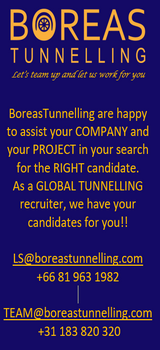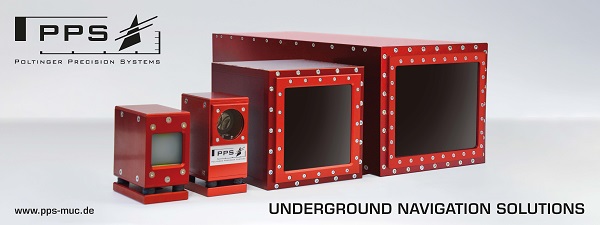THE LYON-TURIN LINE: HERE IS THE TBM THAT WILL CROSS THE BORDER The TBM delivered at the Herrenknecht factory in Germany
TELT information:
Schwanau (Germany), 21 December 2023 – Today, a new tunnel boring to excavate the tunnel of the Lyon-Turin railway line has been delivered at the Herrenknecht factory in Germany. This TBM, that will excavate the central part of the Mont Cenis base tunnel, is the first that will cross the border between France and Italy. It has a head of a diameter of 10.4 metres, a weight of 3200 tonnes and a length of 334 metres (the same as a hundred-storey skyscraper).
This is the fourth of the seven TBMs delivered that will allow the realisation of the project, and it is designed to excavate 18 km of one of the two tubes of the Mont Cenis base tunnel, between the Villarodin/Bourget-Modane access adit in France and the Clarea underground safety site in Italy.
Also present at the delivery ceremony were the ELYOT group of companies, consisting of Eiffage Génie civil (group head), Spie batignolles génie civil, Ghella and Cogéis, the project's bi-national promoter TELT, and the Piedmont Region's Transport Councillor, Marco Gabusi.
The characteristics of the TBM (Tunnel Boring Machine)
It is a 'gripper' tunnelling machine that clamps directly on the tunnel walls with its two arms and pushes forward while the head, equipped with 62 cutters, rotates, excavating the rock. The excavated material is conveyed back on a conveyor belt that carries it through the belly of the TBM and thence to the outside world.
While the excavation is being carried out, equipment serving the TBM applies shotcrete support to the walls, along with the bolts and ribs. Behind it advances another machine called the Würm (worm). This is 650 metres long and realises the final concrete lining of the tunnel.
Digging in the heart of the mountain
The choice of this type of tunnel boring machine is dictated by several factors: the type of geology characterising the excavation areas, which here consist of relatively compact, uniform and stable formations; the great depth of the tunnels to be built, with more than 2,200 metres of overburden; and the associated geotechnical phenomena, such as detachments, ‘popping conditions', or convergence (which is to say that the mountain tends to close the space due to the great pressure of the overlying rock). Not to mention the 'natural' high temperatures present at these depths, which were highlighted thanks to the
exploratory tunnel of La Maddalena in Chiomonte, which made it possible to establish the
specifications for this new TBM.
For this reason, this type of TBM allows both sliding and rigid ribs to be applied, capable of accompanying and blocking potential ground movements, and it is also equipped with drills that undertake forward explorations, so as to know the type of terrain encountered.
The CO5 construction site
The CO5 is the construction site of the Mont Cenis base tunnel that crosses the border between Italy and France underground. It starts from the Villarodin-Bourget-Modane access adit, passes through the Ambin massif, and so reaches the underground safety site of Clarea. At the same time as the 18 km of tunnels (for two tubes) that will be excavated by twin tunnel boring machines (36 km in total), 7.8 km of tunnels will also be dug using conventional methods. In addition to these works, all connected and logistical works will be carried out. In total, around 15 km of tunnels will therefore be constructed using the conventional method, including the underground safety area at Modane. The construction site, which is starting
following completion of the work on the four ventilation shafts of the tunnel under construction in Avrieux, will employ around 1,200 people.
Maurizio Bufalini, general director of TELT
“This is the first of two TBMs that will cross the border, the most tangible symbol of our project: a railway that will unite Italy and France through the Alps, connecting our countries and Europe in a more efficient, economic and sustainable way. It is the fourth TBM that we have come here to receive in Schwanau and, as ever, it is always a great thrill. Its twin will be ready in February, and then it will be the turn of the two Italian TBMs. We will then have no less than seven of them digging to complete the 57.5 km tunnel, the longest railway tunnel in the world.”
Salah GHOZAYEL, CO5 project director
“This operational construction site 5 is exceptional from various points of view: in terms of size, logistics, simultaneous excavation using both conventional and mechanised methods, along with the technical and human resources mobilised, all of which are constrained by the single access point provided by the Villarodin-Bourget/Modane access adit. All this means that the group of companies and all those involved will need to be truly adaptable.”
E.h. Martin Herrenknecht, CEO of Herrenknecht AG
“The delivery of the Gripper TBM for the Mont Cenis Base Tunnel is yet another historical milestone for Herrenknecht. We are very proud to be part of such a lighthouse project that will bring Europeans across borders even closer together.
https://www.telt.eu/wp-content/uploads/2023/12/TELT_PR_tbm_n1_CO5_211223_ENG.pdf
cover tunnel photo by: Matt Brown from London, England / CC BY
Copyright 2019-2024 TunnelContact.com









Once completed, it will make a great leap for the connectivity of Turin and Lyon.